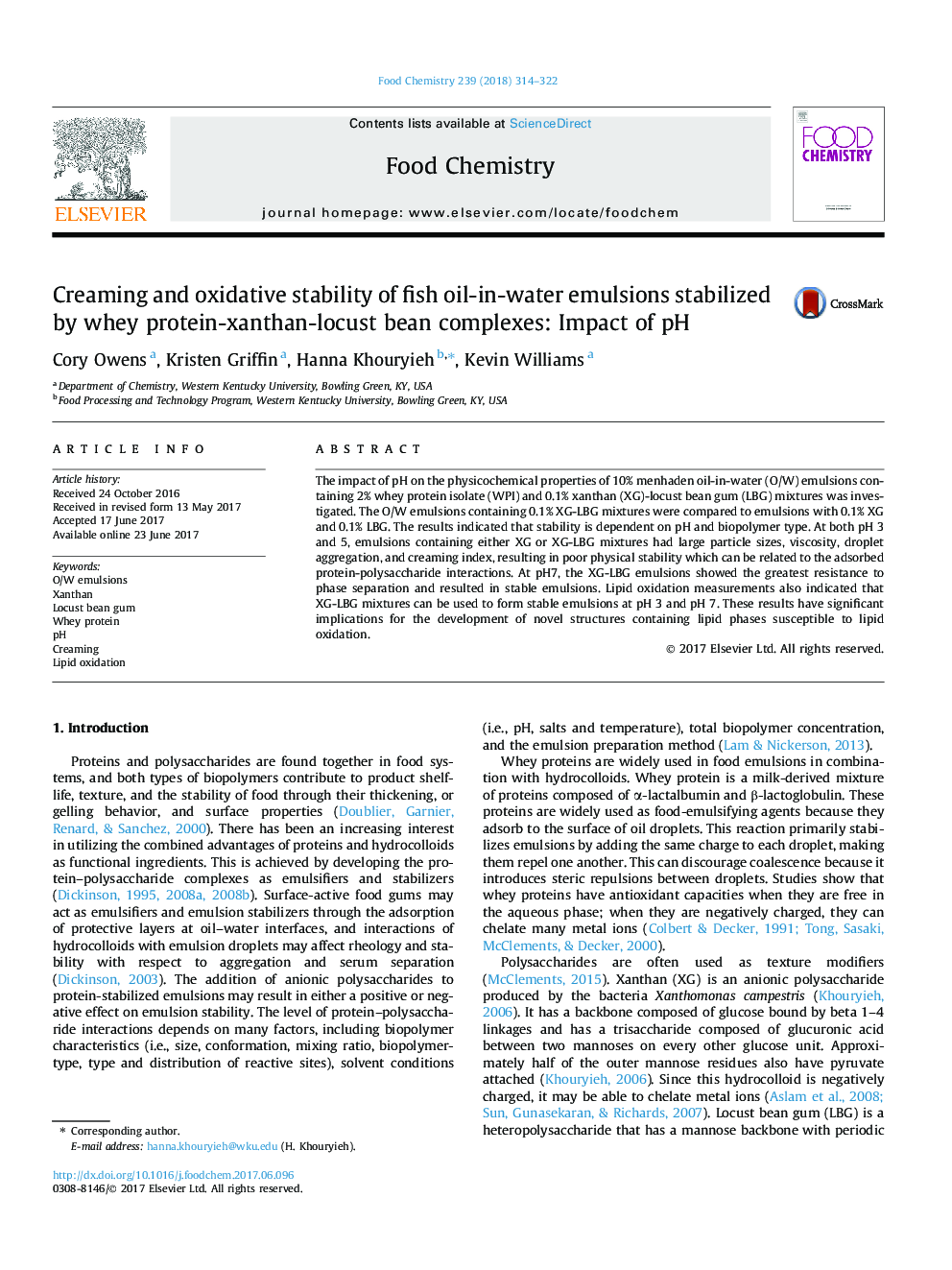| Article ID | Journal | Published Year | Pages | File Type |
|---|---|---|---|---|
| 5132975 | Food Chemistry | 2018 | 9 Pages |
â¢Stability of WPI-stabilized fish O/W emulsions was dependent on pH.â¢At pH 3 and 5, flocculation and creaming occurred due to WPI-XG-LBG complexes.â¢At pH 3 and 5, XG or XG-LBG mixtures increased droplet sizes and viscosity.â¢At pH 7, emulsions with XG-LBG mixtures were the most stable to creaming.â¢XG-LBG complexes reduced lipid oxidation of emulsions at both pH 3 and 7.
The impact of pH on the physicochemical properties of 10% menhaden oil-in-water (O/W) emulsions containing 2% whey protein isolate (WPI) and 0.1% xanthan (XG)-locust bean gum (LBG) mixtures was investigated. The O/W emulsions containing 0.1% XG-LBG mixtures were compared to emulsions with 0.1% XG and 0.1% LBG. The results indicated that stability is dependent on pH and biopolymer type. At both pH 3 and 5, emulsions containing either XG or XG-LBG mixtures had large particle sizes, viscosity, droplet aggregation, and creaming index, resulting in poor physical stability which can be related to the adsorbed protein-polysaccharide interactions. At pH7, the XG-LBG emulsions showed the greatest resistance to phase separation and resulted in stable emulsions. Lipid oxidation measurements also indicated that XG-LBG mixtures can be used to form stable emulsions at pH 3 and pH 7. These results have significant implications for the development of novel structures containing lipid phases susceptible to lipid oxidation.
